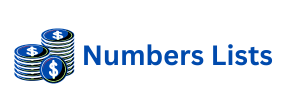Elevating Content Writing with Strategic Backlinks
Effective content writing is a cornerstone of digital success. It reaches target audiences and builds authority. Semantic SEO further refines this approach. It focuses on meaning and context. Understanding search intent is crucial. This helps satisfy user queries deeply. Backlinks are vital for this strategy. They act as votes of confidence. Both external and internal links play key roles. Each type offers distinct benefits. They contribute to a robust online presence. Implementing them correctly is essential. This ensures your content ranks well. It also provides a better user experience.
Semantic SEO moves beyond keywords. It understands topics comprehensively. Search engines analyze entire content. They look for related entities and concepts. High-quality backlinks validate this content. They signal relevance and trustworthiness. Without proper linking, even great content struggles. It might not gain visibility. A balanced backlink strategy is therefore vital. It supports your overall content goals. Focus on meaningful connections. Ensure every link serves a purpose. This improves your site’s standing.
Understanding the Power of an External Backlink
An External Backlink is a link from another website to yours. These links are incredibly valuable. They act as endorsements. High-authority sites passing a link boost your credibility. It tells search engines your content is trusted. This significantly impacts your domain authority. Acquiring quality external links is challenging. It requires excellent content. Your material must be genuinely useful. It needs to offer unique insights. This encourages other sites to link to it. Focus on creating link-worthy assets. These include detailed guides or original research. Relevant links are more impactful. They connect to your topic directly.
The quality of the linking domain matters most. A link from a reputable source carries more weight. It improves your ranking potential. Building relationships can help. Outreach to industry leaders is useful. Provide them with valuable content. This encourages natural linking. Avoid low-quality or spammy links. These can harm your SEO efforts. They might even result in penalties. Always prioritize quality over quantity. A few strong external links are better. They outperform many weak ones. This strategic approach strengthens your site. It enhances your content’s reach and impact. Proper implementation is key.
Crafting Content for Quality External Backlink Opportunities
Creating content that earns an External Backlink is an art. Your content must be exceptional. It needs to solve real problems. Provide definitive answers. Focus on depth and accuracy. Long-form content often performs well. It covers topics comprehensively. Original data and case studies are link magnets. They offer unique value. Infographics and visual content are also highly shareable. They naturally attract links. Make your content easy to consume. Use clear language and good formatting. This enhances readability. Promote your content effectively. Share it across social media. Engage with your audience. This increases its visibility. More eyes mean more link potential.
Consider guest posting on relevant sites. This can help you earn links. Ensure the content is high quality. It must add value to the host site. This builds your reputation. Monitor your backlink profile regularly. Use tools to track new links. Disavow any harmful or spammy links. This maintains a clean profile. A strong link profile signals trust. It tells search engines you are an authority. This consistency supports semantic SEO goals. It helps you rank for complex queries. Strategic content creation is vital. It underpins all successful backlink efforts. Plan your content with linking in mind.
The Strategic Importance of an Internal Backlink
An Internal Backlink connects pages within your own website. These links are powerful yet often overlooked. They improve site navigation for users. Visitors can easily find related content. This enhances their overall experience. Internal links also pass “link equity” or “PageRank.” This helps distribute authority across your site. Important pages receive more internal links. This signals their significance to search engines. It boosts their individual ranking potential. A well-structured internal linking strategy is crucial. It supports your site’s architecture. It also reinforces topic clusters.
Contextual internal links are most effective. They embed naturally within your content. The anchor text should be descriptive. It should accurately reflect the linked page. Avoid generic phrases like “click here.” Instead, use relevant keywords. This provides more context for search engines. It also helps users understand the destination. Internal linking strengthens your website’s hierarchy. It guides search engine crawlers efficiently. They can discover new pages. They understand the relationships between topics. This organized structure benefits semantic SEO. It helps search engines categorize your content. This leads to better visibility. Plan your internal links thoughtfully.
Implementing Internal Backlink Strategies in Content Writing
Effective internal linking starts during content planning. Identify your pillar content pages. These are comprehensive, foundational articles. Link to them frequently from supporting posts. Create topic clusters around these pillars. Each cluster focuses on a specific subject. All articles within a cluster link to each other. They also link back to the pillar. This reinforces topical authority. It creates a strong web of related information. This structure is highly beneficial. It helps search engines understand your expertise. It positions your site as a comprehensive resource. Consistency is key here. Regularly review and update internal links.
Ensure your anchor text is diverse but relevant. Don’t overuse the exact same phrase. Use variations that still describe the content. This avoids over-optimization penalties. It also caters to different user queries. An internal backlink strategy directly impacts user engagement. It encourages visitors to explore more. This increases time on site. It reduces bounce rates. Both are positive signals for SEO. Combining strong external links with robust internal linking creates a powerful synergy. This dual approach maximizes your semantic SEO efforts. It drives organic traffic. It establishes your online authority. Master both types for success.
